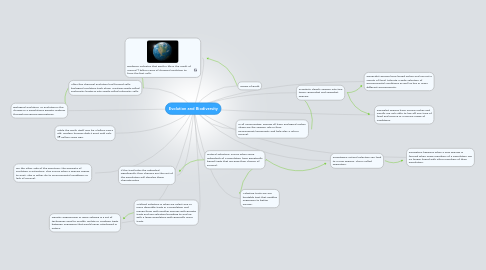Evolution and Biodiversity
by Karl B

1. Biological evolution, or evolution is the change in a populations genetic makeup through successive generations.
2. While the Earth itself may be a billion years old, modern humans didn't exist until only 65 million years ago.
3. After this chemical evolution had formed cells, biological evolution took place, creating single-celled prokayotic bacteria into single-celled eukayotic cells.
4. Evidence indicates that Earth's life is the result of around 1 billion years of chemical evolution to form the first cells.
5. If the trait helps the individual significantly, than chances are the rest of the population will develop these characteristics
6. On the other side of the spectrum, the opposite of evolution is extinction. This occurs when a species ceases to exist. This is either do to environmental conditions or lack of survival.
7. Artificial selection is when we select one or more desirable traits in a population and merge them with another species with genetic traits and use selective breeding to end up with a large population with generally more traits.
8. Genetic engineering or gene splicing is a set of techniques used to modify, isolate or combine traits between organisms that would never interbreed in nature.
9. Origin of Earth
10. Natural Selection, occurs when some individuals of a population have genetically based traits that increase their chance of survival.
11. Adaptive traits are any heritable trait that enables organisms to better survive.
12. In all communities, species all have ecological niches. These are the species role in their environment/community and help play a role in survival.
13. Scientists classify species into two types: generalist and specialist species.
14. Generalist species have broad niches and can eat a variety of food, tolerate a wide selection of environmental conditions as well as live in many different environments.
15. Specialist species have narrow niches and usually are only able to live off one type of food and survive in a narrow range of conditions.
16. Sometimes, natural selection can lead to a new species. This is called speciation.
17. Speciation happens when a new species is formed when some members of a population can no longer breed with other members of their population.


